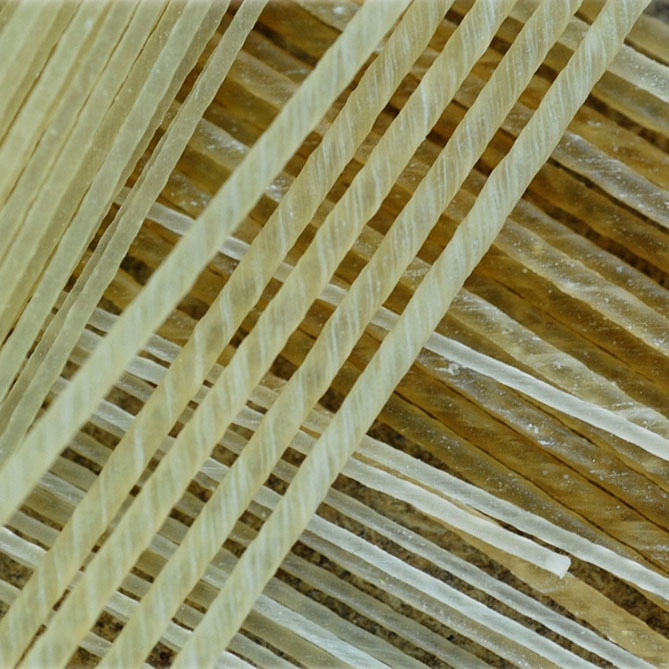
On How to Play a Baroque Cello: Gut Strings (Part 1)
Guy Fishman
I will now attempt to shift the focus of my series on baroque cello from attempting to define what a baroque cellist is to getting to it and actually playing a baroque cello. Before I do, I would like to point out to the reader that for the vast majority of those of us who play period instruments came to them after we had gained experience on standard ones. Holding the cello between one’s legs, using a baroque bow, minimizing vibrato, and other elements that seem, in the minds of many, to be trademarks only of the period instrument movement therefore often feel as though they are diminishing something we’re used to, almost to the point of deprivation. It’s similar to dieting, in the sense that one often limits what one eats, and says to oneself, “I can’t eat this, I won’t eat that, I don’t eat this and the other.”
But making music has to be a wholesome, indulgent, and positive experience, at least in a mindful way. One’s diet may fare better if one employed a paradigm shift and thought of what one can eat rather than the opposite; in the same way, the intrinsic beauty and, yes, the challenges of different equipment can be embraced, and their positive attributes delighted in. At the very least, they provide a bridge that may be used to step into the shoes of a 17th– or 18th-century cellist. I will discuss the process of doing so when I talk about “Authenticity” in a future blog. For now, a reminder that for the cellist of 300 years ago there was but one sort of cello, one type of string, one kind of bow, and he or she saw these as tools with which to make magic, not as hindrances that must be mitigated. Surely, among these may be counted the vocal chords of the baroque cello and, indeed, of every cello until the early 20th century, gut strings.
I recall watching a masterclass by a very fine and famous cellist, who had just finished listening to a student play a prelude from one of J.S. Bach’s suites. The first thing the maestro said was, “Are you familiar with these people who play on gut strings and with no endpins?” He was referring, of course, to so-called “baroque” cellists, and I would add that his reference was far from complimentary and was meant to illustrate what not to do. When I think of that class I am struck by the fact that the first thing he mentioned in order to identify practitioners of historically-informed performance was their use of gut strings.
Steel strings enjoyed a rapid ascendance and near-universal adoption which was all but complete by 1950. But gut strings were used by prominent “modern” players in the 20th century and never really disappeared. During the first World War, production of gut strings seems to have declined, due in part to gut being a preferred material for medical sutures. But many of the most eminent “golden age” players continued using both wound and plain gut for most or all of their strings. Casals played gut strings his entire life, as did Kreisler. Piatigorsky hated the steel A string he was obliged to use, and Feuermann only switched to a steel A when his semi-frequent cruises to Japan proved detrimental to his plain gut A (the rest of his strings were wound gut, and remained so to the end of his tragically brief life). Heifetz went as far as to claim that the only way to create a personal sound on the violin was to use gut strings. His were a silver wound gut G, unwound D and A, and a steel E string, a setup he used throughout his career.
By the 1920s there had been innovators searching for alternatives to gut strings for some time, though with respect to the fact that strings made out of ore had been around since the 12th century, in a way this was nothing new. Now, they were able to take advantage of the temporary difficulty in obtaining high quality gut strings and introduced their products through the sort of exclamations of excellence that would make Don Draper proud. These included more stability in tuning, greater evenness across the strings, a louder tone, and greater longevity, while also claiming to mimic the “desirable” qualities of gut, notably its sound. Even today, more often than not a tungsten-wound steel string such as Pirastro’s Permanent comes in an envelope stating the string sounds “just like gut.”
High-quality gut strings are being manufactured once again by several master string makers. The reasons for avoiding gut cannot be found amongst the aforementioned promises of bigger and better things, each of which can be easily refuted. For instance, once gut strings stretch they remain quite stable, even during changes in climate (I suspect salt air aboard his ship had more to do with Feuermann’s damaged strings than any inherent flaw in their construction). Their longevity, just as with steel, has to do with how they are stored and played, as well as the chemical makeup of the player’s perspiration. Regarding evenness, I would ask why you would want to sound even, sacrificing the innate character of each string, a quality that the best composers exploited and often specifically asked for? And regarding loudness, I would say: Loud in comparison to what? When playing with a piano, the only thing standing between a string player and complete obliteration is a sensitive pianist. That’s it. Steel strings and a short stick holding up the lid won’t help you much if your partner fails to take balance into account. This becomes a more acute problem when playing in front of an orchestra, yet Casals and Heifetz performed concerti with orchestras that were populated by string players who, by the 1930s and 1940s, had largely switched to steel strings. And they did so in halls such as the Royal Albert Hall in London, Carnegie Hall in New York, and Symphony Hall in Boston, large spaces that were nevertheless built when most players had their instruments strung with gut (and I doubt that an architect would find much work after designing a hall where the musicians could not be heard). Their careers continued, because just as before that switch to steel, audiences wanted to hear what these masters had to say, and just as before, conductors obliged by providing a favorable balance.
For more on gut strings, including tips for more on their history and tips for their use, please check in next week.
Subjects: Baroque, Historical
Tags: Baroque, cello, CelloBlog, gut strings, Guy Fishman
